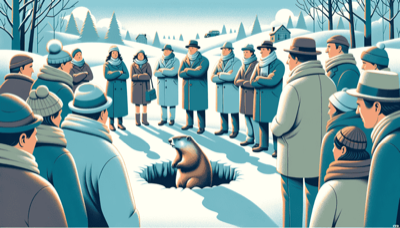We're here to help you keep count of the days to or since a date. Just click the button below and enter your chosen date to get started. Also choose the suggested days or search for a special day above #countingthedays

Groundhog Day is celebrated annually on February 2nd across the United States. It is based on the Pennsylvania Dutch superstition that if a groundhog emerges from its burrow on this day and sees its shadow due to clear weather, it will retreat back into its den, and winter will persist for six more weeks. Conversely, if it does not see its shadow because of cloudiness, spring will arrive early.
The tradition has its roots in ancient European weather lore, wherein a badger or sacred bear was the prognosticator as opposed to a groundhog. The specific practice began in the United States in the 18th and 19th centuries when German immigrants settled in Pennsylvania and brought their Candlemas Day traditions with them.
Punxsutawney, Pennsylvania: The most famous Groundhog Day celebration takes place in Punxsutawney, where Punxsutawney Phil, the groundhog, makes his prediction. Thousands gather at Gobbler's Knob, a site just outside the town.
Media Coverage: The event garners widespread media attention, with live broadcasts and extensive coverage in newspapers and online platforms.
Festivities: The day features various festivities including music performances, speeches, and a pre-dawn party leading up to Phil's emergence from his temporary home on Gobbler’s Knob.
Attend local events: Communities may host their own groundhog ceremonies with local groundhogs making predictions.
Watch Punxsutawney Phil's prediction: Many tune in to watch live broadcasts or streams of Punxsutawney Phil’s prognostication.
Engage in themed activities: Schools and cultural institutions often organize educational activities related to weather lore and groundhogs.
Enjoy special screenings: Some people celebrate by watching the 1993 film "Groundhog Day," which popularized the holiday beyond its traditional observance.